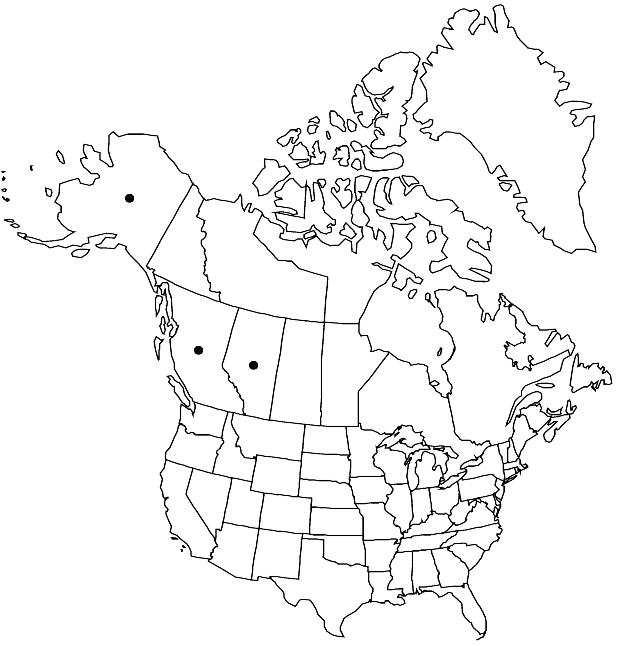Salix stolonifera
Proc. Wash. Acad. Sci. 3: 333, plate 41, fig. 1. 1901.
Plants 0.02–0.1 m, forming clones by layering or rhizomes. Stems trailing or erect; branches red-brown, (sometimes weakly glaucous), glabrous; branchlets yellow-brown or greenish brown, glabrous. Leaves: stipules (sometimes marcescent) absent or rudimentary on early ones, rudimentary or foliaceous on late ones; petiole (deeply to shallowly grooved adaxially), 3–9–20 mm, (ciliate, glabrous adaxially); largest medial blade amphistomatous or hemiamphistomatous, (sometimes with 2 pairs of secondary veins arising at or close to base, arcing toward apex), elliptic, broadly elliptic, or subcircular, 16–42 × 12–30(–38) mm, 1–2 times as long as wide, base convex, cuneate, or rounded, margins flat or slightly revolute, entire or serrulate, ciliate (hairs wavy), apex convex, acuminate, rounded, or retuse, abaxial surface glabrous, adaxial highly glossy, glabrous; proximal blade margins entire or irregularly serrulate; juvenile blade pilose to glabrescent abaxially. Catkins: staminate 13–31 × 7–11 mm, flowering branchlet 1–15 mm; pistillate moderately densely to loosely flowered, stout to globose, 15–54(–90 in fruit) × 6–15 mm, flowering branchlet 2–42 mm; floral bract brown, 1.6–2 mm, apex rounded, entire, abaxially sparsely hairy throughout or distally, hairs straight or wavy. Staminate flowers: abaxial nectary (0–)0.2–0.7 mm, adaxial nectary oblong, narrowly oblong, or ovate, 0.6–1.3 mm, nectaries distinct; filaments distinct (glabrous); anthers ellipsoid, 0.5–0.6 mm. Pistillate flowers: abaxial nectary absent, adaxial nectary oblong, 0.5–1.4 mm, longer than stipe; stipe 0.2–0.8 mm; ovary pyriform, sometimes glaucous, glabrous, beak gradually tapering to styles; ovules 12–13 per ovary; styles connate to distinct 1/2 their lengths, (0.6–)0.8–2 mm; stigmas flat, abaxially non-papillate with rounded or pointed tip, or slenderly cylindrical, 0.32–0.5–0.88 mm. Capsules 4–10 mm.
Phenology: Flowering early Jun-early Jul.
Habitat: Arctic, subarctic, and alpine, wet sedge meadows, hummocky tundra, raised center polygons, Dryas-willow-sedge tundra, Dryas mats on dry ridge tops
Elevation: 0-1000 m
Distribution

Alta., B.C., Alaska.
Discussion
Hybrids:
Salix stolonifera forms natural hybrids with S. arctica and S. barclayi.
Selected References
None.